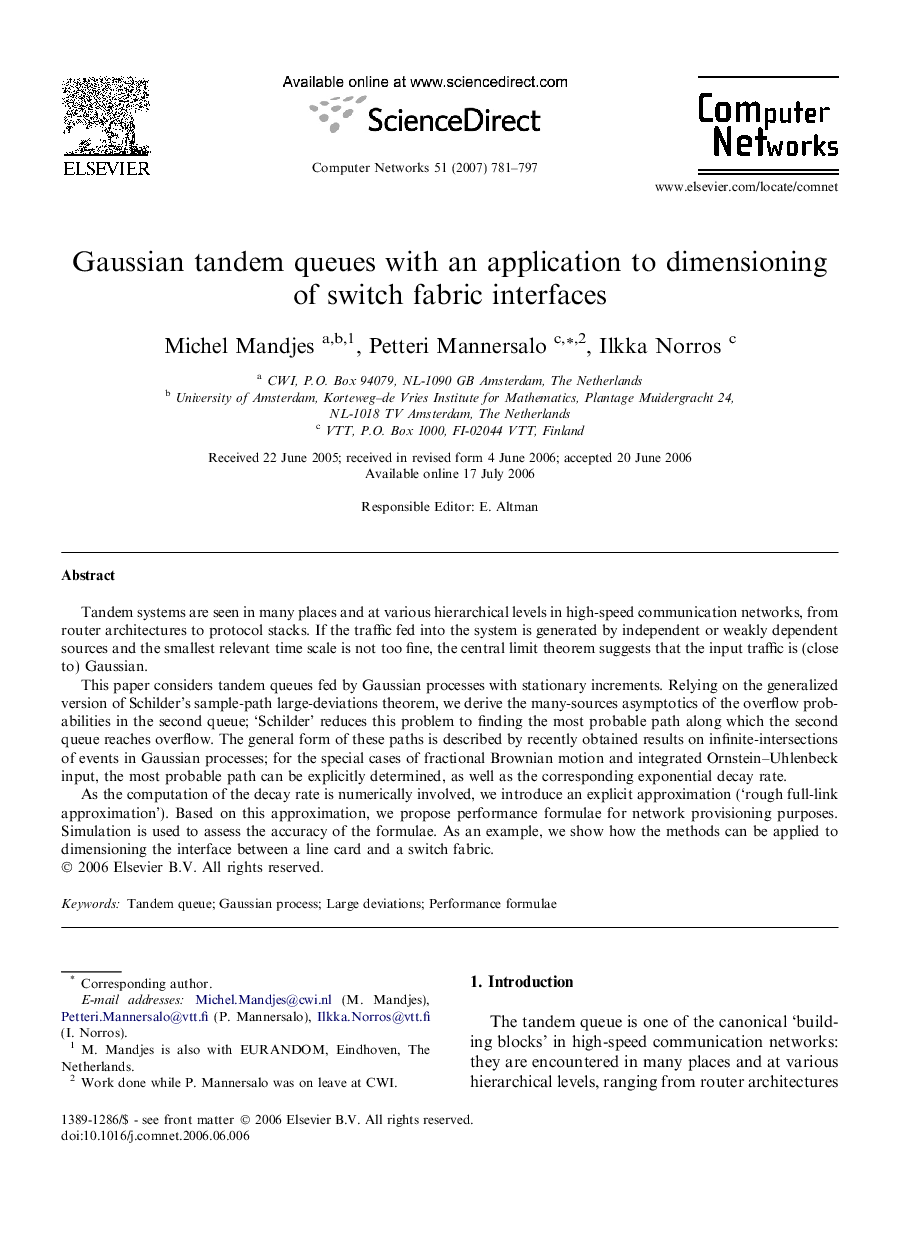| Article ID | Journal | Published Year | Pages | File Type |
|---|---|---|---|---|
| 453304 | Computer Networks | 2007 | 17 Pages |
Tandem systems are seen in many places and at various hierarchical levels in high-speed communication networks, from router architectures to protocol stacks. If the traffic fed into the system is generated by independent or weakly dependent sources and the smallest relevant time scale is not too fine, the central limit theorem suggests that the input traffic is (close to) Gaussian.This paper considers tandem queues fed by Gaussian processes with stationary increments. Relying on the generalized version of Schilder’s sample-path large-deviations theorem, we derive the many-sources asymptotics of the overflow probabilities in the second queue; ‘Schilder’ reduces this problem to finding the most probable path along which the second queue reaches overflow. The general form of these paths is described by recently obtained results on infinite-intersections of events in Gaussian processes; for the special cases of fractional Brownian motion and integrated Ornstein–Uhlenbeck input, the most probable path can be explicitly determined, as well as the corresponding exponential decay rate.As the computation of the decay rate is numerically involved, we introduce an explicit approximation (‘rough full-link approximation’). Based on this approximation, we propose performance formulae for network provisioning purposes. Simulation is used to assess the accuracy of the formulae. As an example, we show how the methods can be applied to dimensioning the interface between a line card and a switch fabric.
